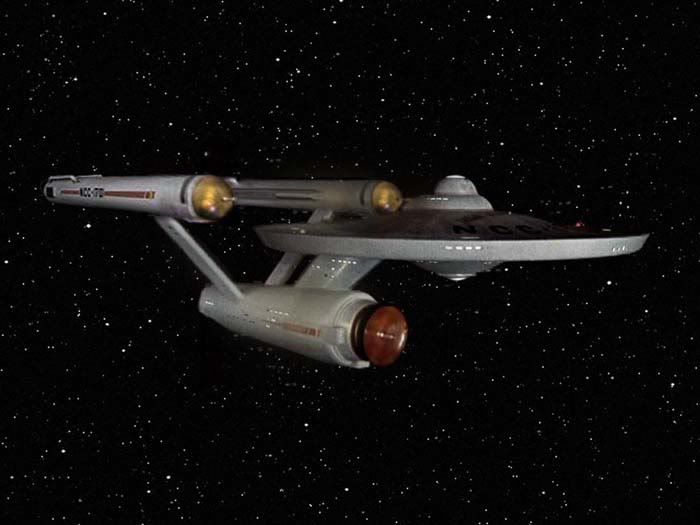Matt Jefferies created a world. More specifically he created a future starship and much of its related tech. He wasn't the first to actually do this given science fiction film and television had already been around for decades. And he certainly wasn't alone during the 1960s era when there was quite a bit of sci-fi on television and film. But it could be argued that MJ stands above them because what he created resonated in a particular way. His future world, his starship, was portrayed in such a way that it all seemed so believable. And it can be argued that his creation has become the most iconic and most widely recognized piece of science fiction hardware: the starship Enterprise.
Of course, MJ wasn't the only creative force in Star Trek. There were other very talented people who contributed either in ideas or in bringing ideas into physical form. But I think a lot of it took their cue from the conceptual template MJ lay down. It wasn't enough to make a new bit of sci-fi hardware look cool but also to make it seem believable.
There are other popular sci-fi vehicles of that era such as the Jupiter II and the submarine Seaview, but they are largely cool unto themselves. MJ's Enterprise and other designs conveyed so much more "beyond the hull" so to speak. They suggested a whole world, a complete albeit yet to be revealed universe we tuned in every week to catch another glimpse of. Much of this, of course, was due to the writers and creative staff, but the Enterprise and its technology was so representative of all that.
Gene Roddenberry stressed that the audience had to believe in the Enterprise to buy into the future and the stories the show presented. He charged Matt Jefferies to create such an object the audience could near immediately latch onto. And MJ delivered in spades.
This isn't to say others didn't contribute significantly---they most certainly had. Much of the Enterprise's appeal, and in extent the world we saw, was enhanced by how they were presented in terms of lighting, photographing and accompanying music, and additionally by the references spoken by the characters.
But I think there was still something about MJ's approach to design that telegraphed itself to others contributing to what made Star Trek work.
Just my two cents.

Of course, MJ wasn't the only creative force in Star Trek. There were other very talented people who contributed either in ideas or in bringing ideas into physical form. But I think a lot of it took their cue from the conceptual template MJ lay down. It wasn't enough to make a new bit of sci-fi hardware look cool but also to make it seem believable.
There are other popular sci-fi vehicles of that era such as the Jupiter II and the submarine Seaview, but they are largely cool unto themselves. MJ's Enterprise and other designs conveyed so much more "beyond the hull" so to speak. They suggested a whole world, a complete albeit yet to be revealed universe we tuned in every week to catch another glimpse of. Much of this, of course, was due to the writers and creative staff, but the Enterprise and its technology was so representative of all that.
Gene Roddenberry stressed that the audience had to believe in the Enterprise to buy into the future and the stories the show presented. He charged Matt Jefferies to create such an object the audience could near immediately latch onto. And MJ delivered in spades.
This isn't to say others didn't contribute significantly---they most certainly had. Much of the Enterprise's appeal, and in extent the world we saw, was enhanced by how they were presented in terms of lighting, photographing and accompanying music, and additionally by the references spoken by the characters.
But I think there was still something about MJ's approach to design that telegraphed itself to others contributing to what made Star Trek work.
Just my two cents.

Last edited:




 ).
).